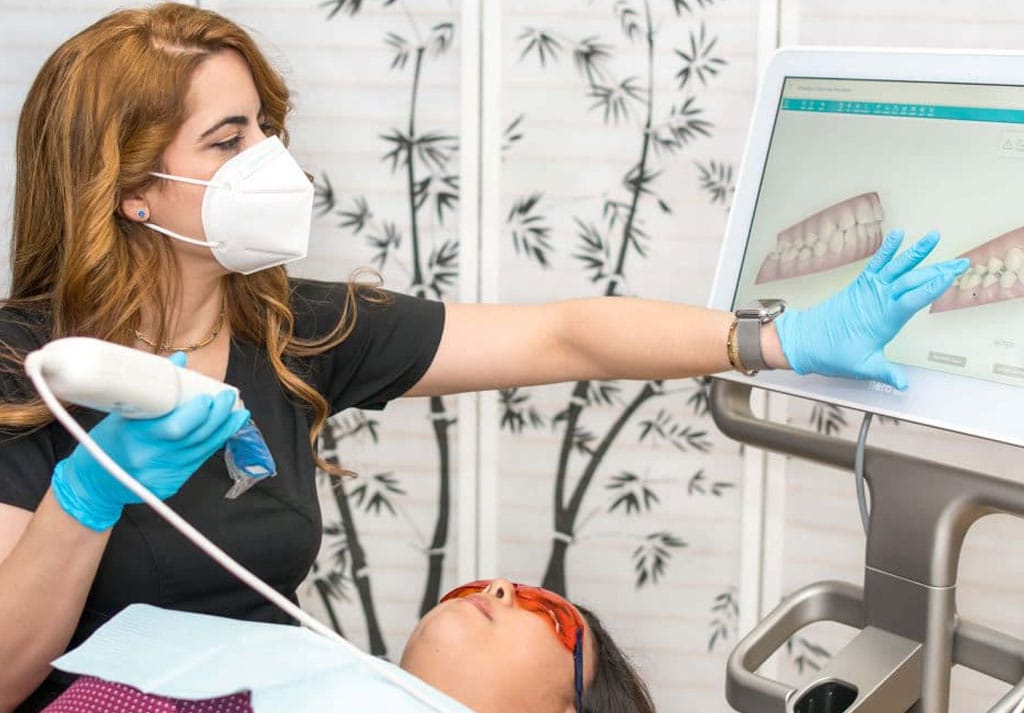You may have heard of a thing known as power chain if you're thinking about getting braces or already have them. Your orthodontist can utilize this adjustable braces power chain to exert more pressure. The metal wire of your braces is often held within the brackets using tiny elastic bands called ligatures. Each bracket in this situation would have its unique ligature.

A power chain resembles a chain because they construct it from numerous joined elastic bands. They'll fit your braces with a power chain, which can connect multiple brackets and take the place of the individual ligatures.
Are there any potential benefits of using power chains?
You can meet several therapeutic needs by combining power chains and braces:
- Aligning
- Crooked teeth
- Rotating teeth
- Adjusting your dental midline
- Minimizing voids between teeth, such as those left after an extraction,
- Encouraging uniform spacing between your teeth
You might have a power chain connecting some of your teeth while using individual ligatures on others. Your orthodontist can strive to meet the varied treatment requirements in various locations of your mouth in this way.
They are also available in various power chain colors, like individual ligatures. Power chains braces are stronger than unique ligatures. Your orthodontic experts use them to apply more force to an area, if necessary.
Are power chains easy to apply?
You can easily attach a power chain to your braces. They will first take the individual ligatures out of their brackets. Then they will use the power chain's rings to swap them out. They distribute power chains on the spool. It makes it simple for your orthodontist to reduce the length of the power chain needed for your braces.
What are the major risk factors associated with power chain braces?
Overall, power chain risks are comparable to those associated with wearing braces. The power chains braces may consist of:
- Food can get stuck between and around your braces, causing gum disease. If it isn't removed by brushing and flossing, it can also create plaque, irritating and inflaming your gums.
- Plaque accumulation can also cause tooth decay. Demineralization, the first stage of tooth decay, or the development of cavities are examples.
- Lost correction. While power chain braces can assist in realigning your teeth and jaw. You risk losing this curative effect if you don't wear your retainer religiously after getting rid of your braces.
- Short tooth roots. Your teeth are tightly held in your jaw by roots, and you can have shorter tooth roots than someone who didn't get braces since braces gradually relocate your teeth. Less stable teeth may result from this.

Do brace's power chins cause pain?
You might see your orthodontist on occasion to have your braces adjusted. They will tighten the wire going through your brackets throughout these visits in order to exert extra pressure. It enables the gradual movement of your teeth into new places. During an adjustment, your braces can also have a power chain added or replaced. As a result, the orthodontist switches out the individual ligatures in your brackets for the power chain's rings.
After having your braces changed, including adding or removing a power chain, it's common to feel pain or discomfort. After the correction, this usually only lasts for a few days.
Conclusion
We hope the above-given information helps you understand some valuable and beneficial facts regarding power chain braces. The above article also highlights various informative and valuable aspects of power chains. To know more about power chains in braces, please check out ivanovortho.com.
Article Source : https://www.bloggingpalace.com/what-are-power-chains-in-braces/
Comments